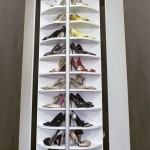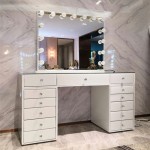Mirrors in Art History: Reflection and Representation
Mirrors, beyond their basic function of reflecting images, have occupied a multifaceted and significant role in art history. From antiquity to the contemporary era, artists have employed mirrors not merely as props but as potent symbols, narrative devices, and tools for self-exploration. The inclusion of mirrors in artworks often transcends simple realism, delving into themes of vanity, identity, mortality, and the nature of perception itself. Understanding the use of mirrors in art requires a consideration of the historical context, the artist's intent, and the cultural significance attributed to these reflective objects.
The early use of mirrors in art, particularly in earlier periods such as the Renaissance and Baroque, often involved symbolic meanings rooted in religious and philosophical beliefs. Mirrors could represent divine wisdom, self-knowledge, or, conversely, vanity and earthly temptations. Later, with the rise of modernism, artists experimented with the deconstructive qualities of reflection, challenging the traditional concepts of space, perspective, and the subjective experience of reality.
Mirrors as Symbols: Vanity, Truth, and the Soul
One of the most persistent symbolic associations of mirrors in art is vanity. This theme is particularly prominent in Vanitas paintings, a genre popular in the 16th and 17th centuries. These paintings, often featuring skulls, decaying fruit, and other symbols of transience alongside luxurious objects, served as reminders of the brevity of life and the futility of worldly pleasures. A mirror in such a context signified the ephemeral nature of beauty and the ultimate emptiness of self-adoration. The viewer is invited to contemplate the fleeting nature of physical appearance and to consider more enduring values.
However, the mirror's symbolism extends beyond mere vanity. It can also represent truth and self-knowledge. This interpretation derives from the idea that a mirror reveals an objective reflection, unmarred by subjective interpretations. In religious contexts, the mirror can symbolize the soul's ability to reflect divine truth. A pure and unblemished mirror, in this sense, represents a soul receptive to spiritual enlightenment.
Furthermore, the act of looking into a mirror can be interpreted as a search for identity. The reflection offers a glimpse into the self, prompting introspection and self-assessment. This theme is particularly relevant in portraiture, where the inclusion of a mirror can add layers of complexity to the portrayal, suggesting a deeper exploration of the sitter's inner life and self-perception. The mirror becomes a tool for examining not just physical appearance but also the sitter's character and motivations.
Mirrors as Narrative Devices: Revealing Hidden Aspects and Creating Ambiguity
Beyond their symbolic value, mirrors also serve as powerful narrative devices in art. They can reveal hidden aspects of a scene, extend the spatial dimensions of a composition, or create a sense of ambiguity and psychological complexity. Artists have skillfully employed these techniques to enhance the storytelling potential of their works.
The strategic placement of a mirror can uncover details that would otherwise remain unseen. For example, a mirror positioned in the background of a painting might reflect a character's actions or emotions that are not immediately apparent in their facial expression. This technique allows the artist to provide additional information and to deepen the narrative complexity. It also encourages viewers to engage actively with the artwork, searching for clues and piecing together the story.
Mirrors can also manipulate perspective and create illusions of space. By reflecting parts of the scene, they can extend the apparent boundaries of the painting or introduce new vantage points. This technique can create a sense of depth and dynamism, drawing the viewer into the composition. In some cases, the reflected image might be distorted or fragmented, further challenging the viewer's perception of reality. These effects can contribute to a sense of unease or mystery, adding to the psychological impact of the artwork.
The inherent ambiguity of reflections can also be exploited to create a sense of psychological complexity. A reflection might not perfectly match the object it reflects, suggesting a discrepancy between appearance and reality. This can raise questions about the true nature of the character or the authenticity of the scene. The viewer is left to ponder the meaning of the discrepancy and to consider the layers of deception or self-deception that might be at play.
Mirrors as Artistic Tools: Self-Portraiture and Perspective
Outside of symbolism and narrative devices, mirrors have also functioned as practical tools for artists, most notably in the creation of self-portraits and the development of accurate perspective. Before the advent of photography, mirrors were essential for artists seeking to capture their own likeness.
The use of mirrors in self-portraiture allowed artists to meticulously study their own features and expressions. This process not only resulted in a realistic representation of their physical appearance but also provided an opportunity for self-reflection and introspection. Many famous artists, including Rembrandt van Rijn and Frida Kahlo, produced numerous self-portraits using mirrors, exploring their own identity and emotional states through visual representation. The act of painting oneself becomes a deeply personal and revealing process, offering insights into the artist's psyche.
Moreover, mirrors played a significant role in the development of linear perspective during the Renaissance. Artists such as Leonardo da Vinci employed mirrors to study the effects of light and shadow and to accurately represent spatial relationships. By observing the reflected image of a scene, artists could gain a better understanding of how objects recede into the distance and how perspective lines converge at a vanishing point. This technique helped to create a more realistic and convincing depiction of three-dimensional space on a two-dimensional surface. The mirror, in this context, served as a tool for scientific observation and artistic innovation.
In conclusion, the mirror's presence in art transcends its functional purpose, serving as a multifaceted symbol, a powerful narrative device, and an indispensable tool for artistic creation. Understanding the various ways in which mirrors have been employed throughout art history provides a deeper appreciation for the complexity and richness of artistic expression. From reflecting vanity and truth to manipulating space and revealing hidden aspects, mirrors continue to fascinate and challenge viewers, inviting them to contemplate the nature of perception, identity, and reality itself.

Artists Curiosity With Convex Mirrors Omelo Decorative
The Self Portrait Mirror Studio 8 Art History Today

A Room With View Part I Windows And Mirrors In The History Of Art St Mary S Calne Blogs Logs

Artists Curiosity With Convex Mirrors Omelo Decorative

Mirror Streetsofm

Mirrored Mystery 7 Mirrors In Paintings Throughout History

Artists Curiosity With Convex Mirrors Omelo Decorative

The Mirror Master Of Painters Sight Size

The Mirror And Its Symbolic Meaning In Art History Artcentrica

Symbols In Art What S There The Mirror Arthive








